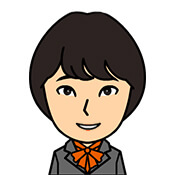
Once you can talk about the present, the next step is the past tense.
This is an expression used to say “was” or “did”.
Once you are able to use the past tense, your ability to express yourself will expand dramatically.
How to make the past tense.
Attach “-았/었/였” to verbs and adjectives.
“-았/었/였” is used to talk about the past.
Attach “-았/었/였”.
The present
쌀을 씻습니다.
I wash the rice.
-았/었/였
↓↓↓
The past.
쌀을 씻었습니다.
I washed the rice.
Like this, Just adding “-았/었/였” makes it past tense.
Use “-았/었/였” according to the vowel in the stem of the word.
The past tense changes depending on the vowel in the stem.
Vst + -았/었/였 + 습니다
많다 + -았 + 語尾 = 많았습니다
받다 + -았 + 語尾 = 받았습니다
놀다 + -았 + 語尾 = 놀았습니다
먹다 + -었 + 語尾 = 먹었습니다
이다 + -었 + 語尾 = 이었습니다
만들다 + -었 + 語尾 = 만들었습니다
수영하다 + -였 + 語尾 = 수영했습니다
활발하다 + -였 + 語尾 = 활발했습니다
※V = verbs or adjectives.
※st = stem
The stem vowel has ‘아,오’.

I got a birthday present from my teacher.
(받다)

I spent time with my friend in Gangnam.
(놀다)
When the stem vowel has ‘아,오’, it is combined with -았.
No ‘아,오’ in the vowels.

I had Sundaeguk at the school cafeteria.
(먹다)

Who made this?
(만들다)
When no ‘아,오’ in the vowels, it is combined with -었.
Past tense of ‘~하다’.
The word ‘~하다’ has -였 attached to it and becomes 하였, but in conversation it is pronounced 했.

What did you do there?

We apprehended the perpetrator last night.

I was on the phone until midnight with My friend.
Let’s learn “~하다” as “~했습니다”.
Cases in which omission or shortening of sentence patterns occurs.
If similar vowels follow, one is omitted.
If the vowel in the stem and “-았/었” sound alike, the vowel may be omitted from the pronunciation.
가다 + -았 = 가았습니다 → 갔습니다
(ㅏ + -았 = -았)
서다 + -었 = 서었습니다 → 섰습니다
(ㅓ + -었 = -었)
Omitted from the vowel.

Yumi went home first.
(가다)

I stood in line for 3 hours straight.
(서다)
Think of it as a shortening of the sound by connecting sounds, just as ‘가았습니다’ is shortened to “갔습니다” when pronounced quickly.
Pronunciation changes to double vowels.
In some cases, shortening of sentence patterns occurs.
보다 + -았 = 보았습니다 → 봤습니다
(ㅗ + -았 = -았)
마시다 + -었 = 마시었습니다 → 마셨습니다
(ㅣ + -었 = -였)
Double vowels in stem and past tense.

Yesterday I watched a movie at home.
(보다)

I drank more coffee than usual.
(마시다)
The principle of contraction is that if you pronounce 마시었다 quickly, it becomes 마셨다.
The past tense of nouns is another change in the pronunciation of double vowels.
The noun cannot be used as is, so it is used with 이다 in the past tense.
이다 + -었 = 이었습니다 → 였습니다
(ㅣ + -었 = -였)
학교이다 + -었 = 학교이었습니다 → 학교였습니다
(ㅣ + -었 = -였)
Double vowels in 이 and 어.

Thirty years ago, that was a school.

Ten years ago I was in junior high school.
These can also be considered double vowelization.
Some past tenses do not change according to principle.
Vocabulary with sounds that drop out during change.
In some cases, the past tense does not change according to the rules.
For example, this is a case where some sounds drop out when the past tense is used.
・(으) drops out
크다 + -었 = 크었습니다 → ㅋ었습니다 → 컸습니다
(ㅋ + -었 = -컸)
・(ㅎ) drops out
하얗다 + -었 = 하얗었습니다 → 하야었습니다 → 하얬습니다
(하얗 + -었 = 하얬)
Vowels and consonants drop out and pronunciation changes.

How was your English exam?
(어떻다)

I felt very happy.
(기쁘다)
It is hard to remember everything at once, so let’s work on it little by little.
Vocabulary with “-았/었” after the stem form changes.
Some vocabulary words have “-았/었” after the stem form changes.
춥다 + -었 → 추우 + -었 = 추웠습니다
(ㅂ → 우)
묻다 + -었 → 물 + -었 = 물었습니다
(ㄷ → ㄹ)
The sound of the patchum changes and the past tense is attached to it.

It was very hot in Vietnam.
(덥다)

I walked an hour to the office.
(걷다)
These must be remembered as they are, as exceptions.
Let’s start by describing what we ate the night before last in Korean!